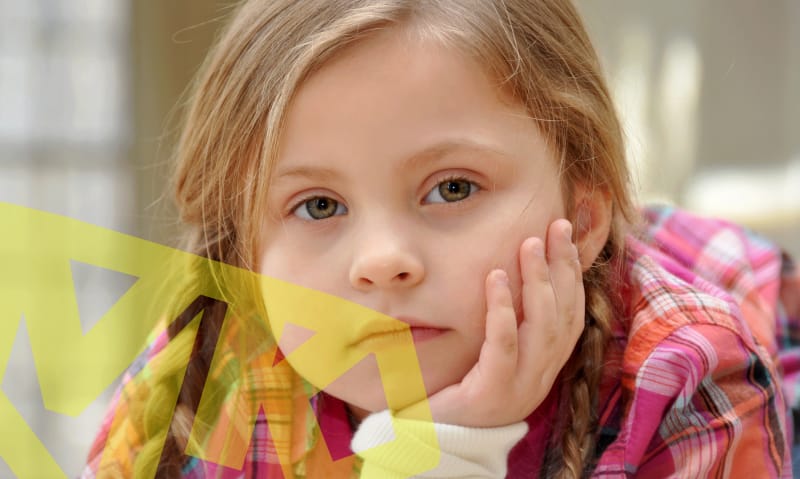5 Facts You Should Know About Childhood Cavities

How to Lessen your Child’s Cavity Risk
Have you ever read the facts from the Centers for Disease Control and Prevention about childhood cavities? The statistics are staggering. Among children between 12 to 19, over half have experienced a cavity in their adult teeth. Over half of younger children between the ages of 6 and 8 have experienced a cavity in their baby teeth. Over 90% of people over the age of 20 have had a cavity. With statistics like this, it might make us wonder if all of our oral hygiene habits are worth it.
It might seem like oral hygiene to prevent childhood cavities, and tooth decay is a lost cause. But don’t be fooled. Cavities, including childhood cavities, are among the most significant unmet medical and dental health treatment needs in the United States. Without the efforts that we take to brush our teeth, floss, and see the dentist regularly, the cavity epidemic would be far worse.
When cavities are left untreated, it can lead to pain and infections that can negatively impact our ability to eat, speak, play, and learn. Further, untreated cavities can turn into severe infections, called abscesses, that can spread to other parts of our body. For this reason and more, it is vital to understand how cavities and tooth decay can affect our children’s overall health.
What You Should Know About Childhood Cavities
Tooth decay is a severe challenge to kids all over the world. Childhood cavities can cause painful mouth conditions and can have unfortunate impacts on other aspects of a child’s life. Let’s check out this list of 5 facts that parents and children should know about childhood cavities.
1. Childhood cavities affect children of all ages.
As we said earlier, despite our best intentions, childhood cavities, also referred to as childhood caries, are not all that uncommon. Dental experts indicate that 42% of children between the ages of two and 11 have tooth decay that has gone untreated. Further, over one-fifth of children between the ages of 2 and 5 have a dental cavity. No matter what age your child is, they are at risk for cavities.
Regular brushing, flossing, and routine visits to see a Must Love Kids pediatric dentist can help to reduce the risk of childhood cavities in your youngster. Our dentists will partner with you and your child to help prevent an occurrence or reoccurrence of a cavity. Parents can help prevent childhood cavities by monitoring their child’s nutrition, transitioning toddlers from bottles to cups as soon as possible, and offering children water to drink instead of sodas or fruit juices.
2. Cavities are an infectious disease.
Dental cavities are infectious and transmissible because they are caused by bacteria that have colonized the tooth’s surface. The presence of high sugar levels in today’s modern diet has led to an increase in cavities. As a result, dental caries is now considered the most common infectious disease in children. Dental cavities are also the most common chronic disease in adults.
Parents often find themselves shocked when we tell them that their child has untreated tooth decay or a cavity. But childhood cavities are not something to be ashamed of. The essential next step to a cavity diagnosis is to have that cavity treated by a dental professional and learn appropriate ways of preventing further decay.
3. Untreated childhood cavities can lead to problems at school.
Though all kids need to be excused from school at times for medical and dental appointments, untreated cavities can lead to more time away from school than necessary. Routine visits only occur twice a year, and many families try to schedule dental appointments over the winter break and summer vacation. However, if your child has poor oral health, it may mean more time away for fillings or other dental work. And when left untreated, your child’s cavity may lead to them feeling unwell and missing class because they don’t feel well enough to attend school.
4. Untreated cavities can lead to other health risks.
If your child has untreated tooth decay, it can be linked to pain and infections that can interfere with daily activities such as eating, sleeping, playing, speaking, and learning. Medical researchers also suggest that there may be a linkage between tooth decay and heart disease, stroke, pulmonary disease, and other serious illnesses.
Thankfully, it is possible to lessen the risks of serious illnesses by practicing proper oral hygiene throughout the ages. No matter how old you are, it is essential to keep your teeth in a healthy condition.
5. Dental fillings are a common treatment for childhood cavities.
If your child has a cavity, the most common treatment will be a dental filling. At Must Love Kids, Dr. Mo and Dr. G use composite fillings, which provide a tooth-colored restoration for your child’s mouth, providing them with a natural-looking smile. We remove the decay from the tooth during this procedure and then insert a filling into the small hole that we create. Fillings put a successful end to the decay and prevent the childhood cavity from getting worse.
Let Must Love Kids Pediatric Dentistry help with cavities.
If your child lives in the Vancouver, Washington area and is complaining of dental pain and it has been a while since they have been to the dentist, it is time to schedule an appointment. We’re here to help parents and children better understand the risk factors for childhood cavities so that they can implement strategies to prevent cavities from happening. We look forward to hearing from you.